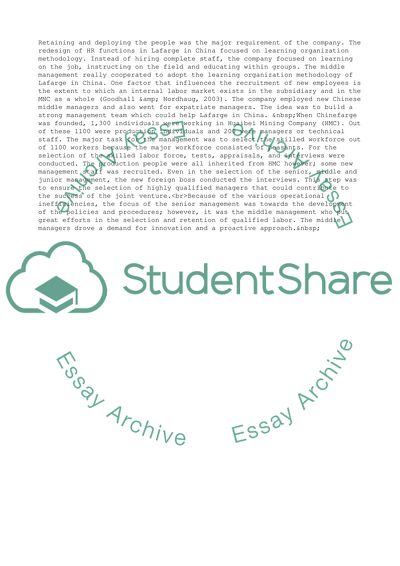Cite this document
(The Role of Middle Management in the Joint Venture Case Study, n.d.)
The Role of Middle Management in the Joint Venture Case Study. Retrieved from https://studentshare.org/management/1726743-evaluate-the-role-of-middle-management-in-bringing-about-successful-change-in-this-international-joint-venturegive-examples-showing-how-this-was-achieved-with-reference-to-international-management-theory
The Role of Middle Management in the Joint Venture Case Study. Retrieved from https://studentshare.org/management/1726743-evaluate-the-role-of-middle-management-in-bringing-about-successful-change-in-this-international-joint-venturegive-examples-showing-how-this-was-achieved-with-reference-to-international-management-theory
(The Role of Middle Management in the Joint Venture Case Study)
The Role of Middle Management in the Joint Venture Case Study. https://studentshare.org/management/1726743-evaluate-the-role-of-middle-management-in-bringing-about-successful-change-in-this-international-joint-venturegive-examples-showing-how-this-was-achieved-with-reference-to-international-management-theory.
The Role of Middle Management in the Joint Venture Case Study. https://studentshare.org/management/1726743-evaluate-the-role-of-middle-management-in-bringing-about-successful-change-in-this-international-joint-venturegive-examples-showing-how-this-was-achieved-with-reference-to-international-management-theory.
“The Role of Middle Management in the Joint Venture Case Study”, n.d. https://studentshare.org/management/1726743-evaluate-the-role-of-middle-management-in-bringing-about-successful-change-in-this-international-joint-venturegive-examples-showing-how-this-was-achieved-with-reference-to-international-management-theory.


